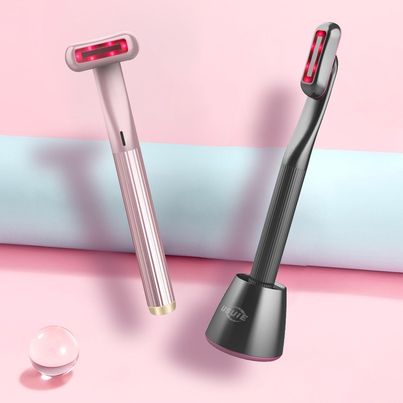Red light therapy, also known as RLT or red and near-infrared light therapy, is a popular treatment that offers numerous benefits for various skin conditions. Understanding what happens during a red light therapy session can help you make the most of this treatment and achieve optimal results.

Pre-Session Preparations
1. Set up of the therapy room
Before the session begins, the therapy room is set up to create a comfortable and relaxing environment for the individual receiving the treatment. The room is usually dimly lit, with soft music playing to enhance relaxation.
2. Red light therapy devices
The primary tool used during a red light therapy session is a red light therapy device. These devices emit red and near-infrared light with specific wavelengths that can penetrate the skin and reach the underlying tissues. The light emitted from these devices is gentle and does not cause damage to the skin.
3. Cleansing the skin
Before your red light therapy session, it is essential to cleanse your skin thoroughly. It ensures no barriers between the light and your skin, allowing maximum absorption of the beneficial wavelengths. Cleansing the skin before the session helps prepare it for the treatment, improving its effectiveness.
4. Protective eyewear
Furthermore, wearing protective eyewear during the red light therapy session is recommended. This precautionary measure is essential to shield your eyes from the intense light emitted during the treatment. The protective eyewear ensures the safety of your eyes and prevents any potential damage that could result from exposure to red and near-infrared light.
5. Ensuring exposed skin areas
Before the session begins, ensure that the areas of your skin intended to be exposed to the red light therapy treatment are free from any products such as lotions, oils, or makeup. It is vital as these products may create a barrier between the light and your skin, reducing the effectiveness of the treatment. Therefore, ensuring that your skin is clean and free from any cosmetic products is essential.

During the Red Light Therapy Session
1. Typical session duration
A typical red light therapy session usually lasts between 10 to 20 minutes. However, the duration can be shorter or longer depending on the individual’s tolerance, the intensity of the light being used, and the specific goals of the therapy.
2. Recommended frequency of sessions
The recommended frequency of red light therapy sessions may differ depending on the desired results and the individual’s response to the treatment. Generally, it is common to start with several weekly sessions, gradually reducing the frequency as the desired outcome is achieved.
3. Sitting or lying comfortably
There is nothing quite like the feeling of sitting or lying comfortably. It is a simple pleasure that can bring immense relaxation and contentment. Whether sinking into a plush armchair with a good book in hand or curling up under a soft blanket on a cozy couch, finding a comfortable position can instantly melt away stress and tension. The body sinks into the support of the cushions, muscles loosen, and a sense of tranquility fills the air. In these moments, everything else fades into the background as you surrender to the sheer pleasure of physical comfort.
4. Relaxation during the session
Relaxation during the session is crucial in ensuring a positive and practical experience. When clients can relax, they can fully engage in the therapeutic process and make the most out of each session. Providing a calm and comfortable environment also contributes to relaxation. Soft lighting, soothing music, and a temperature-controlled room can create a sense of tranquility and increase feelings of relaxation. Additionally, the therapist’s demeanor and approach can significantly influence the client’s level of relaxation.

Post-Session Care
After a red light therapy session, it is essential to take specific post-session care measures to optimize the benefits of the treatment and promote overall well-being.
1. Moisturizing the skin
After a red light therapy session, a moisturizer helps lock in moisture and nourishment. Look for moisturizers that contain ingredients like hyaluronic acid, ceramides, and aloe vera, as these can provide added hydration and promote healthy skin.
2. Avoiding direct sunlight
After a red light therapy session, it is best to avoid direct sunlight, especially within the first 24 hours. The skin may be more sensitive to UV rays, and exposure to sunlight can counteract the benefits of the therapy. If going outside is necessary, apply a broad-spectrum sunscreen with a high SPF to protect the skin.
3. Drinking water
Drinking plenty of water after a red light therapy session is essential. Hydration helps flush out any toxins released during the therapy and promotes overall well-being. Aim to drink at least eight glasses of water daily to maintain adequate hydration levels.

4. Resting and allowing the body to recover
Rest is crucial after a red light therapy session. Take the time to relax and allow your body to recover. It can include meditation, deep breathing exercises, or a good night’s sleep to support rejuvenation.

Conclusion
Red light therapy is a non-invasive treatment that offers numerous potential benefits for the skin, muscles, and overall well-being. Understanding what happens during a red light therapy session can help individuals make informed decisions about incorporating this therapy into their skincare routine. From the set-up of the therapy room to the personal protective measures and the post-session care, every step plays a vital role in ensuring the effectiveness and safety of the treatment.
